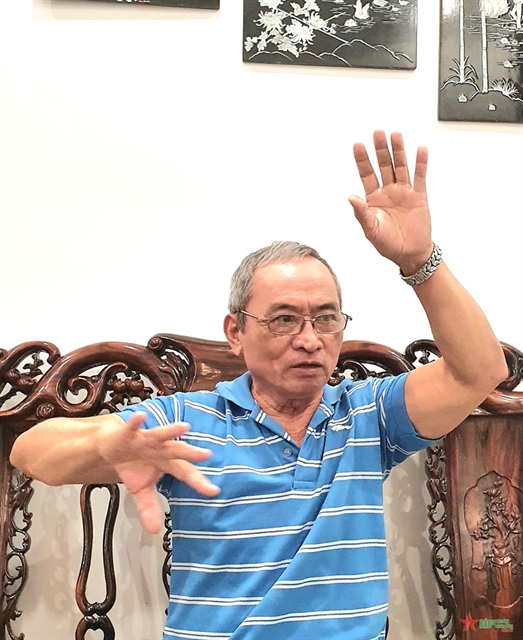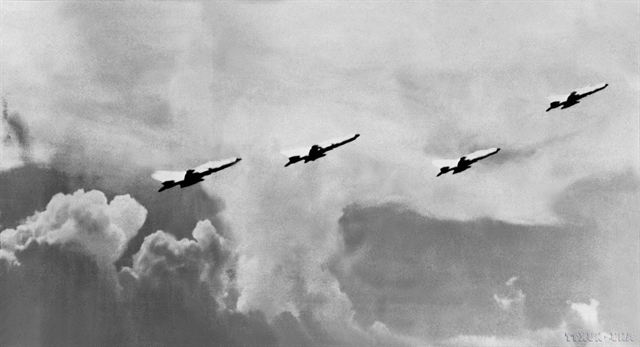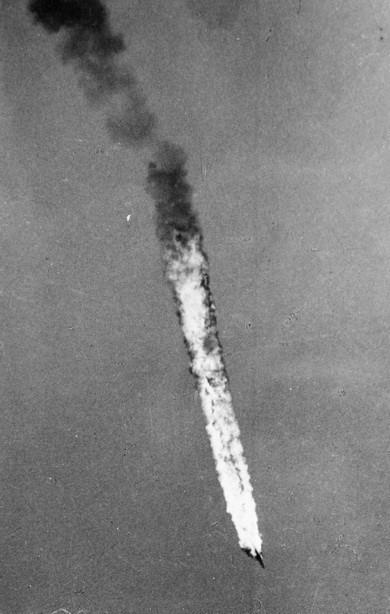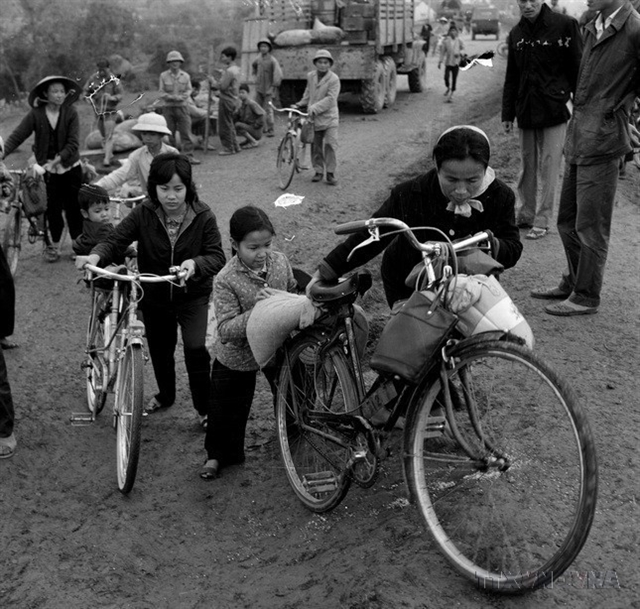 Sunday/Weekend
Sunday/Weekend

By Nguyễn Thế Trung
Lieutenant Colonel Nguyễn Thanh Xuân is among the rare pilots of the North Việt Nam's air force who fought the US Air Force in their aerial bombing campaign Operation Linebacker II over Hà Nội’s sky in December 1972.
The retired Vietnamese air force officer now lives in HCM City. His cosy house is located deep inside a small lane near Tân Sơn Nhất Airport. On the walls, he has hung many photos of himself with a bright smile standing by a Soviet-made MIG-21 jet fighter.
“At that time, he was among the youngest pilots,” says former war-reporter Nguyễn Phước. “He was known as a brave pilot and made excellent victories. Many women fell in love with him. He finally got married to a beautiful art performer.”
 |
| RETIRED: Lt Col Nguyễn Thanh Xuân recalls his dogfights with US jet fighters over Hà Nội's sky in December 1972. VNS Photo Thế Trung |
At 75, Xuân still looks healthy and recalls his youth in a warm voice.
“I loved becoming an air force pilot when I was young,” says Xuân, a native of Chợ Gạo District in the southern province of Tiền Giang.
“In 1965, I was recruited as a pilot and joined the Việt Nam Air Force (VNAF).”
In 1967, Xuân was trained as an air force pilot in the Soviet Union with 102 other comrades, among them only 25 qualified to fly a modern Soviet MiG-21 jet fighter.
In 1970, he returned to Việt Nam and became a pilot in VNAF Regiment 921.
“We tried to practise according to fighting plans with the guidance of experts from the Soviet Union and other senior Vietnamese pilots,” Xuân says.
“I remember taking off from Đa Phúc Airport, north of Hà Nội, looking at the immense blue sky and the magnificent scenery below. I admired our beautiful country and was proud to be a jet pilot fighting to protect that land.”
In April 1972, when the American Air Force started its second aerial campaign in an attempt to "bomb North Việt Nam back into the Stone Age", Xuân was assigned to fight against American aircraft in his MiG-21 squadron.
 |
| DOGFIGHT: North Vietnamese jet fighters take off to intercept US aircraft during the Christmas bombing campaign. VNA/VNS File Photo |
 |
| FALLING: An American aircraft is shot down in Hà Nội's sky during the campaign. VNA/VNS Photo Văn Bảo |
Xuân's first feat of arms was shooting down an American aircraft in Hà Nội’s sky on August 8, 1972.
“Our whole unit was ready to fight every day. We received an order to take off to intercept an enemy aircraft approaching the city's air space,” Xuân says.
"At about 10am, our flight took off. My comrade, Nguyễn Đức Soát, flew in the 1st position; I was behind in the 2nd. When my jet reached an altitude of over 6,000m, I encountered an American RF-4.
“With well-trained skills and determination, I launched a missile onto the RF-4, which soon became a giant torch and fell from the sky.”
Two American pilots were reportedly able to parachute to safety, but were caught by a militia unit.
After this victory, pilots Soát and Xuân were awarded the President Hồ Merit Badge and honoured as Excellent Soldier later the same year.
Belief in victory
Such face-to-face fighting by Xuân and his comrades fuelled the intense fire of belief in their victory. They knew they could win.
Four months later, in December 1972, the US Air Force launched Operation Linebacker II.
The aerial bombing campaign dubbed the "Christmas Bombings" unfolded over 12 days from December 18-29, aiming to destroy all major targets in Hà Nội and Hải Phòng areas and threaten the Vietnamese people’s willingness to fight for national independence and reunification.
During the campaign, the US Air Force's B-52 bombers and F-111 fighters made more than 4,500 sorties releasing 80,000 tonnes of bombs and shells, seriously destroying Hà Nội, Hải Phòng and the vicinity, including many residential areas.
With a brave fighting spirit and creativity, the Vietnamese army and people completely defeated the most brutal US air strikes in modern history.
The North Vietnamese jet fighters and surface-to-air missiles shot down US 81 aircraft, including 34 B-42s. This glorious victory was praised as "Điện Biên Phủ in the Air", resembling the victory of Việt Nam over the French at Điện Biên Phủ battle in 1954.
The victory forced the US to sit at the negotiation table to sign the Paris Peace Accords in February 1973 and pull out of Việt Nam.
After reunification in 1975, Xuân and many of his comrades in the Vietnamese Air Force were sent to the South to fulfil a new task in Cambodia: rescue the Cambodian people from the genocidal Pol Pot regime.
Nguyễn Hữu Phúc, an official from Tân Bình District’s Party Committee, says: “Such veterans are shining examples of what it was like to overcome hardship. They are the most influential figures to educate the youth about patriotism and revolutionary zeal.”
Journalist Phước says he believes that veterans such as Xuân are living witnesses of the patriotic wars: “They are a priceless power to help us educate and train today’s younger generation.” VNS
 |
| SEEKING SHELTER: Women and children evacuate Hà Nội before the campaign. VNA/VNS File Photo |
 |
| NEVER FORGET: Visitors see a B-52 remnant at the Victory Against B-52 Museum in Đội Cấn Street, Hà Nội. VNA/VNS Photo Hoàng Hiếu |




